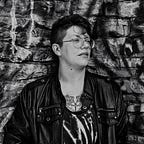A Queer Gambit Declined
The hit Netflix series wants us to think it’s pretty gay. But is it?
The Queen’s Gambit, Netflix’s record breaking, utterly bingeable hit mini-series which tells the story of Beth Harmon, an orphaned, addicted chess prodigy in the 1960s, has been hailed as the newest queer TV hit. If you haven’t watched it yet, you’re the last one — and please do, before reading this essay. The show’s themes are undeniably feminist: in seven brisk episodes we watch the elfin Beth taking on the male-dominated world of competitive chess, outplaying a retinue of men who seem intent on teaching her the game, even as she soundly beats them in it. The Queen’s Gambit too, dallies with queerness. There is a gay side character, the appropriately named DL Townes, and in a blink-and-you’ll-miss-it moment, a French woman is seen tucked into Beth’s bed.
But unfortunately the series flirts with queer themes, but never quite consummates the relationship.
The Queen’s Gambit is based on a 1983 novel by Walter Tevis, inspired by the author’s own relationship with booze and pills and, presumably, chess. The script largely stays close to the text of the slim novel by an author better known for penning The Man who Fell to Earth and The Hustler. Dialogue and scenes are lifted wholesale; the plot is expounded but rarely directly diverges. Maybe that’s why The Love That Dares Not Speak It’s Name is never spoken of directly in the miniseries. The book is, in fact, unrelentingly straight. All apparently-queer characters (if we can call them that) were inventions for the series, perhaps meant to diversify the show for a 2020 audience. The only “queer content,” as it were, is a scene in the novel’s first chapter, where Beth’s lifelong friend Jolene molests her. This scene — unpleasant, complicating, and potentially triggering — is understandably removed for television. And while it simplifies a relationship which has been already been criticized for upholding racist tropes, it also simplifies Beth’s sexual interactions. If we’re to read the Beth of the television show as queer (and I’m not sure we are), then it’s good she’s not implied to be in any way queer…
